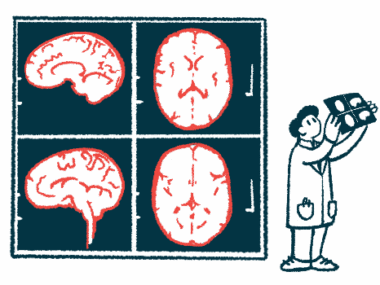Neurofilament light, nerve damage marker, high in AHP patients
NfL levels rise by 68 times in acute attacks, reflect disease's 'debilitating nature'
Written by |

Blood levels of neurofilament light (NfL), a marker of nerve cell damage, are 68 times higher during an acute attack in people with acute hepatic porphyria (AHP) than the levels seen in healthy adults, a recent study reported.
NfL levels were elevated in patients with sporadic or recurrent porphyria attacks.
“This study not only underscores that neurological damage associated with the disease can manifest in any patient, irrespective of the number of attacks, but also reinforces the progressive and profoundly debilitating nature of acute and chronic symptoms observed in individuals with AHP,” the researchers wrote.
The study, “Neurofilament light chain as a biomarker for acute hepatic porphyrias,” was published in Frontiers in Neurology.
Mechanisms behind chronic AHP symptoms ‘poorly understood’
Porphyria is caused by disruptions in the production of heme, a molecule essential for transporting oxygen in red blood cells, that lead to the toxic accumulation of porphyrins and other precursor molecules.
AHP is a group of porphyrias — including acute intermittent porphyria, hereditary coproporphyria, and variegate porphyria — marked by excessive accumulation of porphyrins in the liver, particularly porphobilinogen (PBG) and delta-aminolevulinic acid (ALA).
Disease symptoms include pain, digestive problems, and neurological issues, often occurring in acute attacks that can last days to weeks. Most patients also experience chronic symptoms affecting their quality of life.
However, the mechanisms causing “these chronic symptoms in AHPs [remain] poorly understood, and there exists an unmet medical need for the identification of biomarkers that can assess disease progression and therapeutic response,” the researchers wrote.
A study in Brazil evaluated whether NfL blood levels could be a potential biomarker for AHP.
The observational study included 137 adults, mainly women (66.4%) and Caucasians (76.6%) with a mean age of 35.5. AHP patients were divided into asymptomatic individuals with positive genetic testing with or without elevated urine levels of PBG and ALA, and symptomatic patients diagnosed either during an acute episode or with sporadic or recurrent attacks.
Two control groups were included, one consisting of healthy individuals and the other with a rare disorder called hereditary transthyretin amyloidosis with polyneuropathy (ATTRv-PN), which also causes nerve damage.
Most patients in study had acute intermittent porphyria
Among patients with symptomatic AHP, most had acute intermittent porphyria (55%), followed by variegate porphyria (35%). In the asymptomatic AHP group, most had a mutation in the HMBS gene (72.9%), while 16.2% had a mutation in the CPOX gene.
Regarding clinical manifestations, most patients with sporadic (70%) or recurrent (85%) attacks experienced chronic symptoms, including pain, digestive issues, and mood and sleep disturbances.
Compared with the other groups, PBG levels were higher in patients experiencing an acute attack, with a mean of 35.8 mg/24 hours, as were the levels of ALA (14.6 mg/g creatinine).
Mean ALA and PBG levels were not statistically different comparing patients experiencing sporadic attacks and those with recurrent attacks. However, the proportion of people with high PBG levels was significantly higher in those with recurrent attacks (70% vs. 25%).
Average NfL levels during an attack were 68 times higher than those observed in healthy individuals, and they strongly correlated with mean ALA and PBG levels, the researchers reported.
Furthermore, findings indicated “that NfL levels during an attack can be up to 10 times higher than those observed in patients with AHP outside of the crisis period,” the scientists added. In the recurrent attack group, NfL levels also correlated with the number of attacks in the previous year.
Higher NfL levels were evident in ATTRv-PN patients relative to healthy adults.
Physical and mental health survey scores fell with rising NfL levels
Life quality was significantly poorer in AHP patients with sporadic or recurrent attacks relative to healthy individuals, as seen in lower scores on the physical component in the short form-12 health survey. Scores for the mental component of this survey were significantly lower for patients with recurrent attacks than for those with sporadic attacks.
In people with recurrent attacks, low physical and mental component scores correlated with high NfL levels, more attacks in the previous year, as well as high ALA and PBG levels. Both depression and anxiety levels also associated with NfL levels in recurrent attack patients.
“Our findings further contribute to the understanding of neurofilament as a sensitive biomarker for detecting axonal [nerve fiber] damage, albeit with limited specificity,” the researchers concluded.
“Moreover, they suggest that acute hepatic porphyrias exhibit an underlying progressive degenerative mechanism that can be tracked through neurofilament levels, paralleling observations in both common neurological disorders (such as amyotrophic lateral sclerosis, Alzheimer’s disease, multiple sclerosis, Parkinson’s disease) and rare conditions,” they added.






